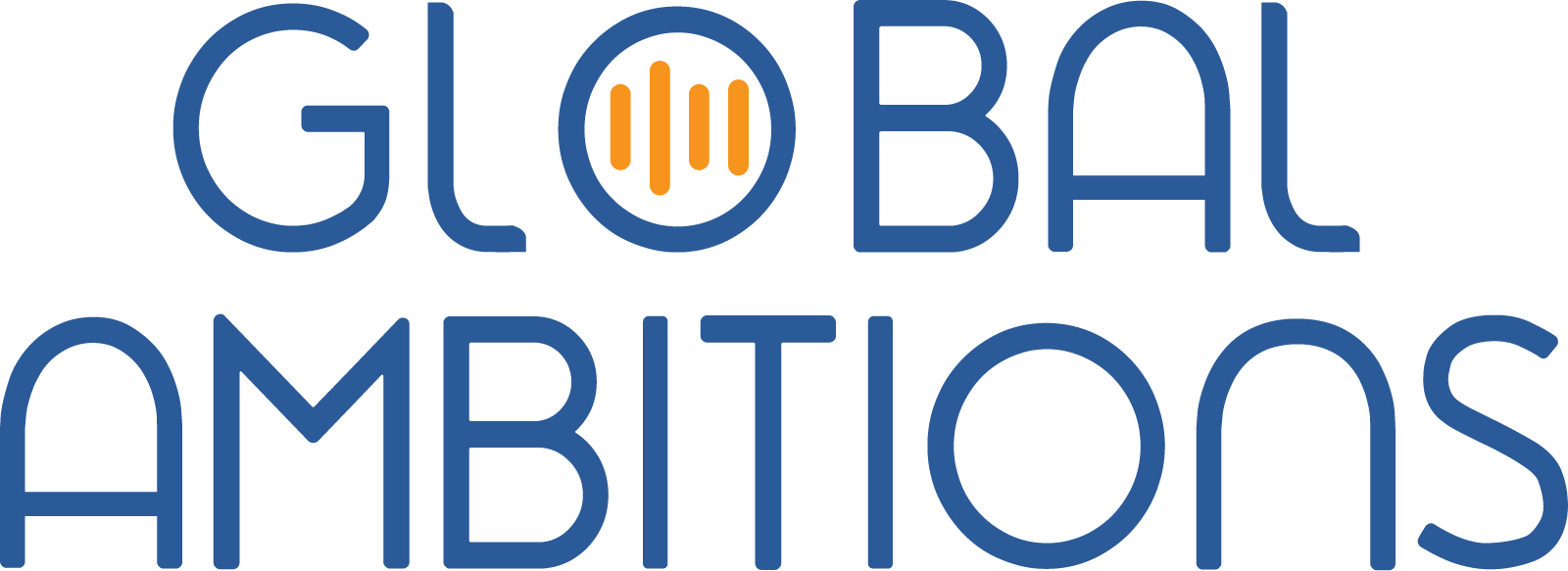With Aleksandrs Pereverzevs, Product Lead at Lokalise
Below is a full transcript of this episode
Stephanie Harris
Hi, my name is Stephanie Harris, and I’ll be your host today for this episode of Global Ambitions. Our guest today is Alex. And he is a product lead at Localize. Alex, welcome to the program.
Aleksandrs Pereverzevs
Hi, Stephanie, it’s a pleasure to be here.
Stephanie Harris
Well, our topic today is going to be design stage localization. But before we get into that, would you mind sharing just a little bit about your background?
Aleksandrs Pereverzevs
So yeah, I joined localize more than two and a half years ago. I initially joined as a customer success manager. I went on the phone, I was speaking to our customers trying to better understand what are the problems that they have, how do they deal with these problems, how our product can help solve these problems better and sent them off to the to the product team to actually move our product forward and make sure that some of the issues and problems that our customers are facing can be solved.
And yeah, for those of you who don’t know much about Lokalise, basically Lokalise is a translation management system. We are often considered to be like a new kid on the block. We’ve been founded in 2017, but since then we had rapid growth, and just recently got our series B.
Stephanie Harris
Congratulations on that, by the way.
Aleksandrs Pereverzevs
Thanks. Thanks very much, Stephanie.
Stephanie Harris
I guess my next question would be, I imagine with Lokalise, you see many clients who come to you with localization issues that are in that early design and development stage. So what are some of the biggest challenges that you see coming up consistently?
Aleksandrs Pereverzevs
So, yeah, you’re right. We have quite a lot of customers who come to us and they’re just starting out their localization programs or even they might be doing some localization already, but they are not really aware of how it should be done because they don’t have that expertize. And so they bump into into different issues, different challenges. And yeah, quite often we see that the process itself doesn’t work.
So there are different people who are involved in the process like developers, product managers, localization managers, if this is a bit more mature, company linguists, obviously, and some other stakeholders from marketing and other departments. And kind of the process just doesn’t work for them. It’s not cohesive. Not all the stakeholders feel that they’re being heard, and it’s hard to track the process itself. They don’t meet the deadlines.
And apart from that, it’s often a huge pain for the developers actually, to make sure that, you know, after you release a new product update that it’s bug-free and there are no localization-related bugs and issues that are popping up. So, yeah, we provide them a platform they can use where they’re in control of their content and they can solve these challenges.
Stephanie Harris
So how does it do that? Like, what is the system that you use to combat those challenges of having those bugs pop up and not getting things done on time, and having confusion between your stakeholders?
Aleksandrs Pereverzevs
So Lokalise itself, we treat it and our customers actually treat it as a single source of truth for all of their translations. And apart from that, we recently have been really promoting the design-led localization workflow. And we’ve seen quite a few customers adopted because our platform, essentially Lokalise becomes a central space for managing all the translations. But then we integrate with the most popular design tools like Figma, Sketch, Adobe XD, where the design teams of our customers work in. And by using our platform together with these design plugins, we really are able to push the design lead localization workflow, which addresses some of the challenges that I mentioned above. And yeah, we have quite a few customers who find success in adopting this workflow and see amazing results.
Stephanie Harris
OK, so it sounds like this is a little bit different than what we see in your general translation management systems, (TMS). A slightly different approach, leading with those integrations with really design to begin with. What inspired you guys to create this particular type of translation management system with these workflows in place?
Aleksandrs Pereverzevs
Sure. So I think the underlying problem is that historically localization was often an afterthought. So you release something and then you start thinking about the localization, obviously. Then we’ve seen the rise of the buzzword, the continuous localization, right? Right. And companies were trying to do the localization in parallel with their development process whenever they are pushing the new product updates and so on. But we realized that we can even push it one step earlier.
So imagine a situation like… Like a modern tech company? They’re always building something, always iterating on their product, and so they have a continuous loop. The continuous process that consists of the product managers, developers, designers trying to figure out what should be the next move for my product. What are the features that they need to ship? What is the change that they need to push in order for my user to extract more value out of my product? And so it all starts with idea, with requirements, with initiative, with the data basically. And then designers start to actually mockup and prototype and provide the UI that potentially can be later on used inside the product. And so already at that point, actually localization can start.
So how we see it, as I’ve said, like our TMS platform Lokalise, it integrates with the most popular design systems. And so if you also bring the designers into the mix right, whenever you have your first prototypes, first designs of the feature that you were about to ship, you can actually push the screens to the TMS system. And what it will do is it will create the screenshots, and it will also automatically create the keys and will populate the base language values.
So let’s say your source language is English, and then you will have these keys together with the English values created already in Lokalise. And you can either run a machine translation automation inside our platform and then actually pull back the results and preview the design in the languages that you were aiming to translate to. Let’s say French , German, and you can see whether your UI actually handles this translation as well. Because as we know, for example, in German language, it often expands by like thirty-five percent. The other languages, Asian languages, which might take a bit more vertical space and there’s also right to left languages, right like Arabic, for example. And you don’t know if actually what you’ve designed will be able to handle all these languages. And so by previewing these translations in your environment, in Figma, in Adobe XD, in Sketch you would be able to catch the issues earlier.
Stephanie Harris
Mm hmm.
Aleksandrs Pereverzevs
But apart from that, you also, as I’ve said, since it’s kind of you are pushing this into the TMS system. Let’s say you’ve run your round of the first check with the machine translation engine and then you kind of push back the updates into the TMS system. Then you can also really at that point involve your linguists and they would be able to translate the strings into the target languages already seeing the screenshot next to their strings that they’re working on so that they have this context of like where the string is actually located inside the application. So that provides them more context. And essentially then in parallel, the development of that feature can already start because developers also have access to all of the keys that were automatically generated after you pushed your screens from the design system to the TMS system.
To sum it up, all of the stakeholders, they can do it sort of simultaneously, and you don’t waste time and you can catch all of the issues that potentially can arise the way earlier.
Stephanie Harris
And that’s something that we hear a lot as well, where in-context is so key to get the right kind of translations. And then also, as you mentioned, having that ability to as soon as you take the screenshots, you can send it back to the developers with all of those different keys. I think that really helps speed up the process, it sounds like.
Aleksandrs Pereverzevs
Absolutely. Absolutely.
Stephanie Harris
All right. Well, can you maybe give us an example of one of your clients who actually did this and what did they do and how did it work out for them?
Aleksandrs Pereverzevs
Sure. Yeah, we have a couple, not a couple actually, quite a lot of customers who adopted or are in the process of adopting this workflow. The first one that comes to my mind is WeLinks they actually have been able to increase the feature rollout with this design-led localization workflow by 90 percent.
Stephanie Harris
Wow.
Aleksandrs Pereverzevs
And there are a couple of other customers like, for example, the tech startup within the Volkswagen Group that now delivers their assets five times faster for the multi-language content creation. And yeah, so basically, what they had to do is if you’re starting something from scratch, so you are starting with a new product or, you know, kind of the new feature, which doesn’t have any legacy localization processes attached to it? Right? It’s pretty simple.
So what you need to do is you just lay out the workflow in a diagram, get your stakeholders in the same room and basically align with them how this will work, when the keys will be passed to the developers, when linguists can start their work, and so on and so forth. If you have some process in place then basically, yeah, there is a job required to, you know, to think about the change management, how would you change this process? And obviously also it all depends kind of on what is the system that you use for managing the translation itself? So do you use any TMS system already? If you do does it integrate with the required tools like Sigma Sketch? And so on. And if not, then it may be actually you need to.
Let’s say you’ve been doing the localization using spreadsheets or the in-house build system then.
Stephanie Harris
Right.
Aleksandrs Pereverzevs
You might want to look in the market and see what are the systems that would satisfy and would actually be able to accommodate this workflow that I talked about.
Stephanie Harris
Right. OK. You’ve mentioned stakeholders a couple of times, so I know it’s really important to get the right people in the room when you’re discussing this. Who do you think that a localization manager would need to make sure to reach out to and really get their buy-in in order to get this system going and to make it work successfully?
Aleksandrs Pereverzevs
Absolutely. I think that’s yeah, that’s a great question. And to even add a bit more context to that, we’ve seen those customers who were not able, for whatever reason, to kind of adopt this workflow. The main blocker for that was that they haven’t got the right stakeholders, and brought them in line.
Stephanie Harris
Mm-Hmm.
Aleksandrs Pereverzevs
And I would say that in this case, there are a couple of stakeholders that you want to make sure are on board with that. So first of all, it’s your product and development teams, right? So that they understand how this can actually help them be more efficient and perhaps free them up from some routine tasks that they have to do otherwise.
Another stakeholder is a designer. So what we’ve seen in the past is that designers and actually also UX writers were quite often not part of the localization process at all. But they’re the people who actually have probably the most empathy for the user in general and whose goal it is to make sure that the experience for the end-user is perfect. And they might struggle to understand all the nitty-gritty pieces of the localization itself. But if you demonstrate this workflow and how this can help them catch some issues earlier in the process, as I’ve said, like some design inconsistencies with the expanding text and so on and so forth, they would actually become like the biggest advocate and the biggest champion of this workflow, and they would make sure that they help you to make sure that this succeeds.
And then also, obviously, there are other stakeholders like depending, of course, on what is the product, what is the content that you’re working on, but also marketing. And with this design localization workflow, you can actually produce apps, screens or some assets that you are working on. It can produce a separate page in a specific language for your marketing team, who perhaps works on that market, right? Or some language expert to be able to evaluate and make sure that the tone of voice of the company is aligned and so on and so forth. So kind of bringing all these stakeholders together into the same room, demonstrating to them the power of the design lead localization workflow would do wonders. Yeah, they will understand that it is actually a win-win situation, and it helps to solve the issues of multiple stakeholders, depending on the pain that they experience. Right?
Stephanie Harris
OK. So is there anything else that you think we should consider around this topic?
Aleksandrs Pereverzevs
I think in general, this is a pretty new concept and new workflow that companies should just start to adopt. So I would say that it will definitely evolve even further in the future. Because ourselves, what we’ve seen in the past is, you know, customers started to use our platform. They’ve been uploading the screenshot. And when they’ve seen that we’re able to recognize the text on the screenshots that they are planning to provide more context to the linguist, they were happy with this, right? That was a game-changer for them. Now we’re in a completely different zone, right?
And we’re in a completely different level where there are more stakeholders who are getting value out of this design-led localization workflow. And we see the TMS systems actually integrating with the design tools quite heavily now. I would say that there is obviously the next level ahead, which would make sure that localization is a growth lever, right? And that one of our customers said this phrase. And I keep on repeating that localization is a shortcut to growth.
And then the next level would be to make sure that all the companies who are starting out building their products at the early stages, they would know that from day one, they should think about localization and that it’s an element of their company growth strategy from day one. Without even having the localization department in place. And obviously, the technology would evolve even further to make sure that it’s enabled and that companies are aware that that’s something that you have to think about in the very beginning. The same like you think about the CRM system for the sales teams or for the marketing automation systems, for the marketing departments. Same would happen with the team for localization.
Stephanie Harris
Yeah. Awesome. Thank you so much, Alex, for coming on the show. It’s been really great.
Aleksandrs Pereverzevs
It was a pleasure being here, Stephanie.

Aleksandrs Pereverzevs
Product Lead at Lokalise




